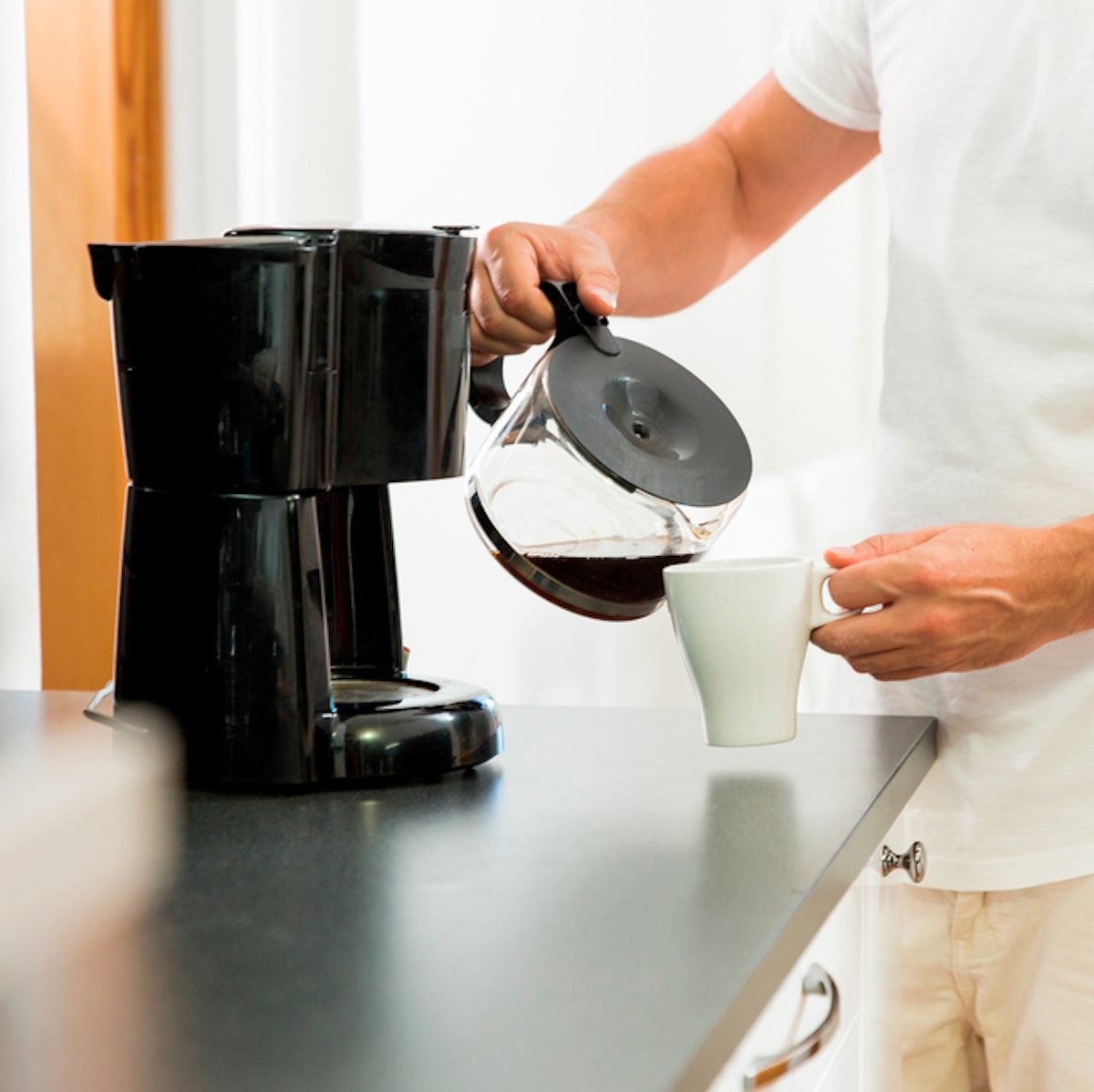Introduction:
How To Brew Coffee In A Coffee Maker is an essential skill for anyone who appreciates the rich, aromatic experience that a freshly brewed cup of coffee brings. Whether you’re a seasoned coffee enthusiast or a newcomer to the world of home-brewed coffee, understanding the steps involved in using a coffee maker can elevate your morning routine and ensure you start your day with the perfect cup. Here’s a detailed guide to help you brew coffee like a pro.
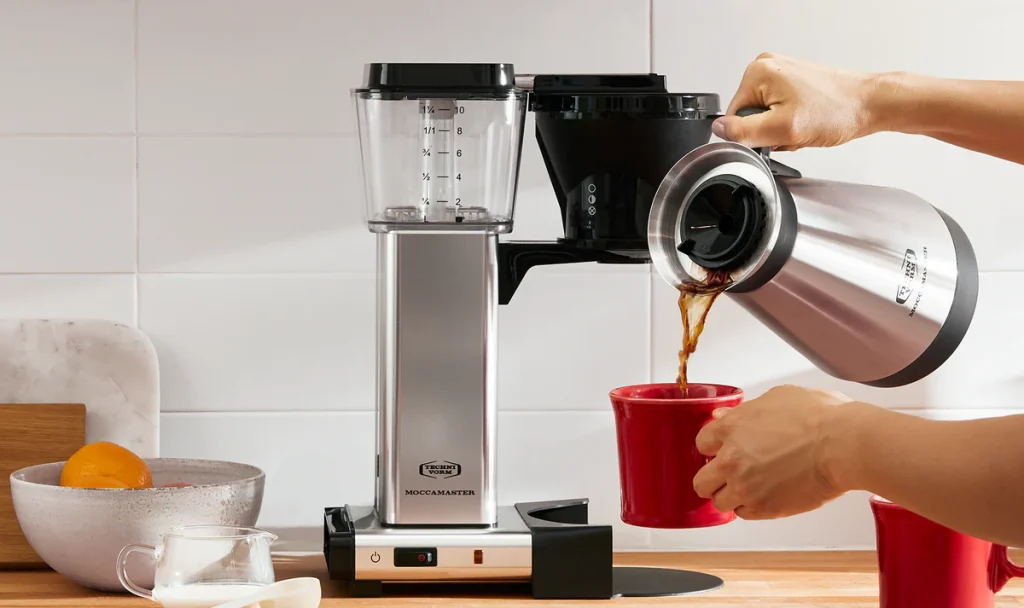
1.Choosing the Right Coffee Beans
The journey to a great cup of coffee begins with selecting the right coffee beans. The freshness, roast level, and grind size of your beans play a crucial role in the final flavor. Opt for freshly roasted beans, and consider your flavor preferences:
Light Roast: Offers bright, fruity, and acidic notes.
Medium Roast: Balances acidity and body, often with caramel and chocolate undertones.
Dark Roast: Delivers a bold, rich flavor with a bittersweet aftertaste.
For most coffee makers, a medium grind size, similar to granulated sugar, works best.
2.Measuring the Coffee and Water
The coffee-to-water ratio is critical for brewing a balanced cup. A general guideline is to use one to two tablespoons of coffee grounds per six ounces of water. If you prefer a stronger brew, increase the amount of coffee grounds slightly.
3.Preparing the Coffee Maker
Before you start brewing, make sure your coffee maker is clean. Any residual coffee oils or old grounds can affect the taste of your coffee. Rinse the carafe and basket with hot water to remove any lingering flavors.
4.Adding Water to the Reservoir
Fill the coffee maker’s water reservoir with cold, filtered water. Tap water with a high mineral content or strong odors can alter the flavor, so using filtered water is ideal.
5.Adding Coffee Grounds
Place a paper filter or a reusable mesh filter into the coffee maker’s basket. Add the measured coffee grounds to the filter, spreading them evenly to ensure a uniform extraction. If your coffee maker has a built-in grinder, add whole beans instead, and the machine will grind them just before brewing.
6.Brewing the Coffee
Close the lid of the coffee maker and turn it on. Most coffee makers have a simple start button, while others offer programmable options for different brew strengths or times. If your coffee maker has a “bloom” feature, use it. This pre-soaks the coffee grounds, allowing them to release gases and enhance the extraction process, resulting in a more flavorful cup.
7.Waiting for the Brew
While the coffee brews, resist the temptation to lift the lid or remove the carafe. Interrupting the brewing process can lead to uneven extraction and an inconsistent flavor profile. Instead, let the coffee maker complete its cycle.
8.Serving and Enjoying
If you’re not consuming the entire pot immediately, transfer the remaining coffee into a thermal carafe to keep it warm without overheating, which can cause the coffee to taste burnt or bitter.
9.Cleaning the Coffee Maker
After you’ve enjoyed your coffee, it’s essential to clean your coffee maker. Discard the used coffee grounds and rinse the carafe, basket, and filter. Regularly deep-clean your coffee maker by running a cycle with a mixture of water and vinegar to remove any mineral buildup.
Tips for Brewing the Perfect Cup:
Experiment with Different Beans: Try different roasts and origins to discover your favorite flavors.
Use Fresh Coffee: Store your coffee beans in an airtight container away from light, heat, and moisture to preserve their freshness.
Preheat the Carafe: Pour hot water into the carafe before brewing to help maintain the coffee’s temperature.
Conclusion
Brewing coffee in a coffee maker is a straightforward process, but attention to detail can make a significant difference in the quality of your brew. By choosing the right beans, measuring carefully, and maintaining your coffee maker, you can enjoy a perfect cup of coffee every time. Whether you like it bold and strong or smooth and mellow, mastering the art of brewing coffee at home will make each morning a little more satisfying.
How do you brew coffee grounds?
Brewing coffee grounds is an age-old method of extracting the rich, flavorful essence of coffee beans. Whether you’re using a traditional drip coffee maker, a French press, or even a stovetop method, the process is an art form that can be tailored to your taste preferences. Here’s a step-by-step guide on how to brew coffee grounds to achieve a delicious cup of coffee every time.
1.Choosing the Right Coffee Grounds
The first step to brewing a great cup of coffee is selecting the right coffee grounds. The grind size plays a crucial role in how the coffee will brew:
Coarse Grind: Ideal for French press and cold brew methods. The larger particles allow for a slower extraction, resulting in a smooth, full-bodied cup.
Medium Grind: Best for drip coffee makers and pour-over methods. The consistency is similar to sand, providing a balanced extraction.
Fine Grind: Suitable for espresso and Aeropress. The smaller particles extract quickly, producing a strong and concentrated flavor.
Always opt for freshly ground coffee whenever possible, as it retains more flavor and aroma compared to pre-ground options.
2.Measuring the Coffee Grounds
The coffee-to-water ratio is key to achieving the perfect brew. A general guideline is to use one to two tablespoons of coffee grounds per six ounces of water. However, you can adjust this based on how strong or mild you prefer your coffee.
Stronger Coffee: Increase the amount of coffee grounds slightly.
Milder Coffee: Use a bit less coffee for a lighter brew.
3.Boiling the Water
The water temperature is vital for proper extraction. Ideally, the water should be just off the boil, around 195°F to 205°F (90°C to 96°C). Boiling water can scorch the grounds, leading to a bitter taste, while water that’s too cool won’t extract enough flavor.
4.Brewing Methods
Drip Coffee Maker
Add the Grounds: Place a paper filter or reusable filter in the coffee maker’s basket and add the measured coffee grounds.
Add Water: Pour the required amount of cold, filtered water into the coffee maker’s reservoir.
Brew: Start the coffee maker and let it complete the brewing cycle. The water will flow through the coffee grounds, extracting the flavors as it drips into the carafe.
French Press
Add the Grounds: Add coarse coffee grounds to the French press, using about one tablespoon per six ounces of water.
Add Hot Water: Pour hot water over the grounds, ensuring all the grounds are fully saturated.
Steep: Stir the mixture gently and place the lid on the French press. Let the coffee steep for about four minutes.
Press: Slowly press the plunger down to separate the grounds from the brewed coffee.
Serve: Pour the coffee into your cup, being careful not to stir up any sediment.
Pour-Over
Prepare the Filter: Place a paper filter in the pour-over cone and rinse it with hot water to remove any paper taste and warm up the cone.
Add the Grounds: Add medium coffee grounds to the filter.
Pour Hot Water: Start by pouring a small amount of hot water over the grounds to “bloom” the coffee. This step allows the coffee to release gases and enhances the flavor.
Continue Pouring: Slowly pour the remaining hot water in a circular motion, allowing it to filter through the grounds.
Serve: Once all the water has passed through, your coffee is ready to be enjoyed.
5.Enhancing Your Coffee Experience
Once you’ve brewed your coffee, you can experiment with different flavors and additives to suit your palate:
Cream and Sugar: Classic additions that can smooth out the coffee’s natural bitterness.
Milk Alternatives: Almond, oat, or soy milk can add a unique twist.
Flavorings: Add a pinch of cinnamon, vanilla extract, or cocoa powder for a different flavor profile.
6.Cleaning Up
After brewing, it’s essential to clean your equipment. Discard the used coffee grounds and wash the filter, carafe, or French press thoroughly. Regular cleaning prevents the buildup of oils and residues that can affect the taste of future brews.
Conclusion
Brewing coffee grounds is a straightforward process that, with a bit of practice, can yield consistently excellent results. By paying attention to the grind size, water temperature, and brewing time, you can tailor each cup to your liking. Whether you prefer a bold, robust flavor or a light, aromatic brew, mastering the art of brewing coffee grounds will enhance your daily coffee ritual and help you start your day on the right note.
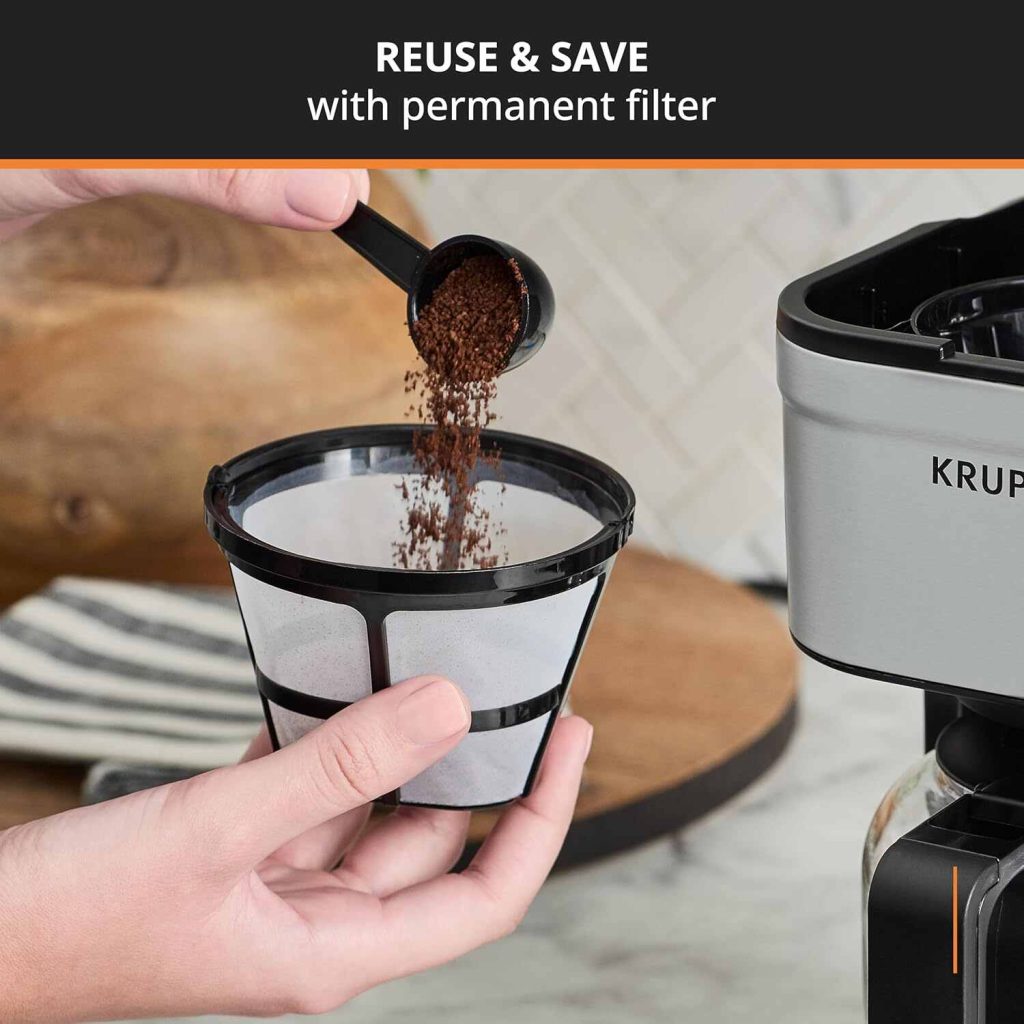
How long does coffee take to brew?
How To Brew Coffee In A Coffee Maker is as much about timing as it is about the quality of the beans and water. The time it takes to brew coffee can significantly affect its flavor, strength, and overall quality. Depending on the brewing method, the time required to make coffee can range from just a few seconds to several hours. Here’s an in-depth look at how long different coffee brewing methods take and why timing matters.
1.Drip Coffee Maker
Brew Time: 4 to 6 minutes
Explanation: A drip coffee maker is one of the most common household appliances for brewing coffee. It typically takes between 4 to 6 minutes to brew a pot, depending on the machine and the amount of water used. The hot water slowly passes through the coffee grounds, extracting flavors before dripping into the carafe. The timing ensures a balanced extraction, producing a smooth, well-rounded cup of coffee.
2.French Press
Brew Time: 4 minutes
Explanation: The French press, also known as a press pot or plunger pot, is favored for its ability to produce a full-bodied cup of coffee. After adding hot water to the coarse coffee grounds, the mixture is allowed to steep for about 4 minutes. This immersion method allows for a complete extraction of flavors, giving the coffee a rich and robust taste.
3.Espresso Machine
Brew Time: 25 to 30 seconds
Explanation: Espresso is a concentrated coffee that requires a very short brewing time. The entire process takes around 25 to 30 seconds, producing a small but intense shot of coffee. Timing is critical with espresso; too long or too short, and the shot can be over-extracted or under-extracted, affecting the taste.
4.Pour-Over
Brew Time: 3 to 4 minutes
Explanation: The pour-over method involves manually pouring hot water over coffee grounds in a slow, controlled manner. The total brew time typically ranges from 3 to 4 minutes, depending on the grind size and the amount of coffee used.
5.Cold Brew
Brew Time: 12 to 24 hours
Explanation: Cold brew coffee takes significantly longer to brew compared to hot methods. The coffee grounds are steeped in cold water for 12 to 24 hours, depending on the desired strength. The extended brewing time results in a smooth, low-acid coffee concentrate that can be diluted with water or milk. Cold brew is a great option for those who prefer a less acidic and more mellow coffee experience.
6.AeroPress
Brew Time: 1 to 2 minutes
Explanation: The AeroPress is a versatile brewing device that allows for quick brewing. The process involves steeping coffee grounds in hot water for about 30 seconds to 1 minute, followed by pressing the mixture through a filter. The total brew time is typically 1 to 2 minutes, producing a coffee that is smooth, rich, and less bitter than many other methods.
7.Moka Pot
Brew Time: 5 to 10 minutes
Explanation: The Moka pot, also known as a stovetop espresso maker, brews coffee by passing boiling water through coffee grounds using steam pressure. The process usually takes between 5 to 10 minutes, depending on the heat source and the amount of water. The result is a strong, espresso-like coffee that is rich in flavor.
Why Timing Matters in Coffee Brewing
The brewing time is crucial because it determines how much of the coffee’s flavor compounds are extracted. Under-extraction, caused by too short a brew time, can lead to sour, acidic coffee, as not enough of the flavorful oils and sugars have been dissolved. Over-extraction, caused by brewing for too long, can result in a bitter, astringent cup because the water has pulled out too many of the coffee’s soluble components.
Conclusion
The time it takes to brew coffee varies widely depending on the method used. From a quick 30-second espresso shot to a leisurely 24-hour cold brew, each method requires specific timing to achieve the best flavor. Understanding these times and the impact they have on the final product is essential for brewing the perfect cup of coffee. Whether you prefer the robust intensity of an espresso or the smooth, mellow flavors of a cold brew, mastering the timing of your brew can elevate your coffee experience to new heights. Master the stovetop espresso maker: add water, coffee grounds, assemble, and brew on medium heat for rich, bold coffee.
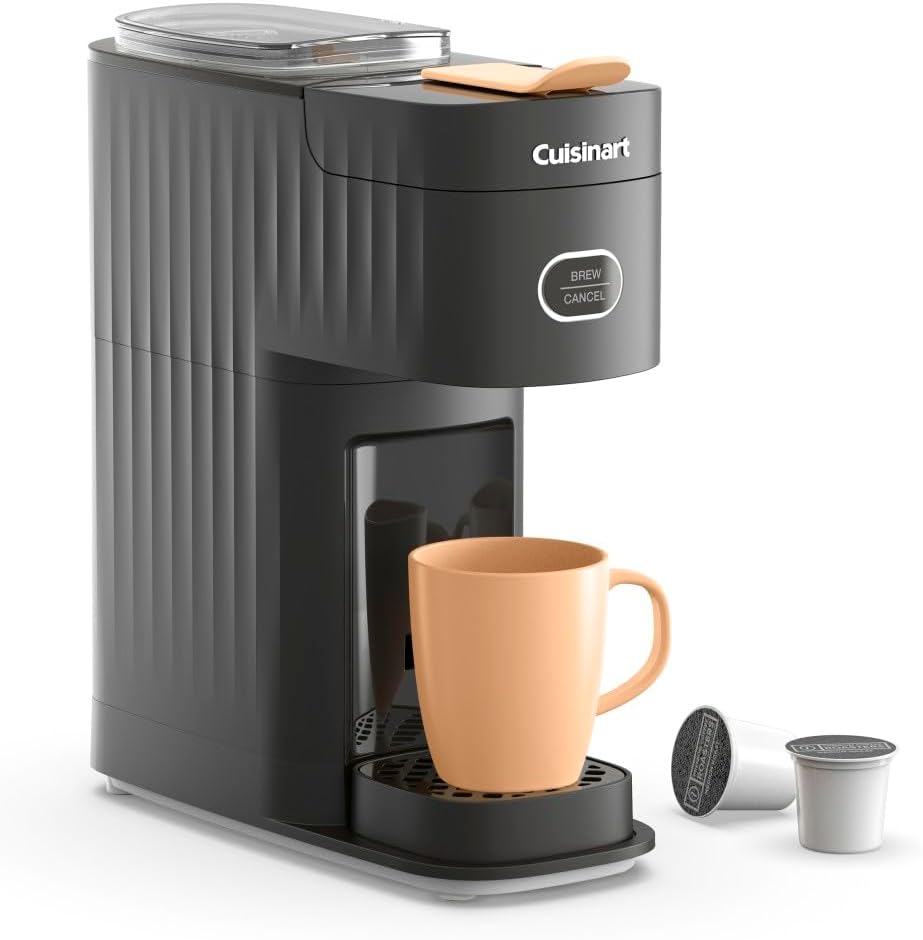
How is the best coffee brewed?
Brewing the best coffee is a blend of art and science, requiring attention to detail, an understanding of the brewing process, and a personal touch. With countless methods and variations, finding the best approach to brewing coffee may seem daunting. However, by mastering a few key principles, anyone can elevate their coffee game and enjoy a consistently exceptional cup. Here’s a comprehensive guide on how the best coffee is brewed.
1.Start with High-Quality Beans
The best coffee is brewed from fresh, high-quality beans that suit your taste preferences:
Single-Origin vs. Blend: Single-origin beans offer distinct flavors from specific regions, while blends combine beans from different origins for a balanced flavor profile.
Roast Level: Light roasts highlight the beans’ natural flavors, often with fruity or floral notes. Medium roasts balance acidity and body, while dark roasts provide a bold, rich flavor with a smoky finish.
Freshness: Freshly roasted beans, used within a few weeks of roasting, deliver the most vibrant and complex flavors.
2.Use the Right Grind Size
The grind size directly impacts the extraction process and, ultimately, the flavor of your coffee. Each brewing method requires a specific grind size:
Coarse Grind: Ideal for French press and cold brew, where the grounds steep in water for an extended period.
Medium Grind: Best for drip coffee makers and pour-over methods, allowing for a balanced extraction.
Fine Grind: Necessary for espresso machines and AeroPress, where water passes through the grounds quickly under pressure.
Using a burr grinder instead of a blade grinder ensures a consistent grind size, which is crucial for even extraction.
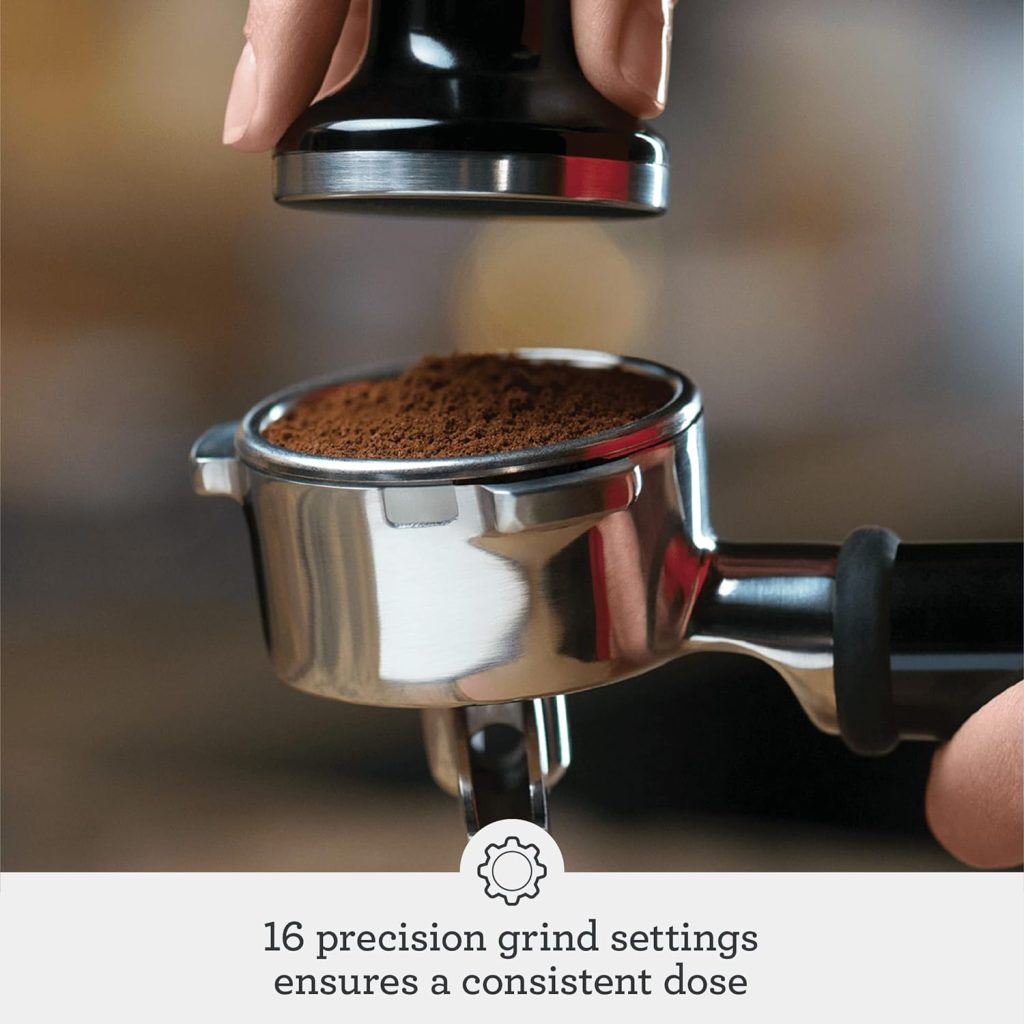
3.Perfect the Coffee-to-Water Ratio
The ratio of coffee to water is crucial in determining the strength and flavor of your brew. A standard guideline is to use 1 to 2 tablespoons of coffee per 6 ounces of water. However, this can be adjusted based on personal taste preferences:
Strong Brew: Increase the coffee amount slightly for a bolder flavor.
Milder Brew: Reduce the coffee amount for a lighter, more delicate cup.
For precise measurements, using a kitchen scale to weigh the coffee and water is recommended.
4.Pay Attention to Water Quality and Temperature
Water makes up about 98% of your coffee, so its quality and temperature are essential:
Water Quality: Use filtered water to avoid any off-flavors caused by minerals or chemicals in tap water.
Temperature: The optimal water temperature for brewing coffee is between 195°F and 205°F (90°C to 96°C). Water that’s too hot can scorch the coffee, leading to bitterness, while too cool a temperature will under-extract, resulting in a sour taste.
5.Master the Brewing Techniques
Different brewing methods can yield varying flavors and strengths, but mastering your chosen technique is key to brewing the best coffee.
Pour-Over
Best For: Clean, bright flavors with distinct notes.
Method: Place a paper filter in the cone, add medium-ground coffee, and pour hot water in a circular motion. The process should take about 3 to 4 minutes.
French Press
Best For: Full-bodied, rich flavors with more oils and sediments.
Method: Add coarse-ground coffee to the press, pour hot water, and steep for 4 minutes before pressing the plunger down.
Espresso
Best For: Concentrated, intense flavors with a creamy texture.
Method: Use finely-ground coffee, and let the machine extract the coffee under high pressure for 25 to 30 seconds.
Cold Brew
Best For: Smooth, low-acid coffee that can be enjoyed cold.
Method: Steep coarse-ground coffee in cold water for 12 to 24 hours, then strain and dilute to taste.
6.Timing Is Everything
Each brewing method has an optimal brewing time to ensure the right balance of flavors:
Espresso: 25 to 30 seconds
Pour-Over: 3 to 4 minutes
French Press: 4 minutes
Cold Brew: 12 to 24 hours
Over-brewing or under-brewing can lead to bitter or weak coffee, respectively. Stick to the recommended brewing time for the best results.
7.Serve and Enjoy Immediately
Once brewed, coffee should be consumed promptly to enjoy its peak flavor. Leaving coffee to sit for too long can result in a stale or bitter taste. If you’ve brewed more than you can drink immediately, store the excess in a thermal carafe to keep it warm without overcooking.
8.Experiment and Customize
The best coffee is ultimately a matter of personal preference. Don’t be afraid to experiment with different beans, grind sizes, brewing methods, and ratios to find your perfect cup. Take notes on what works best for you and continue refining your technique.
Conclusion
How To Brew Coffee In A Coffee Maker Brewing the best coffee requires attention to detail, a willingness to experiment, and an appreciation for the process. By starting with high-quality beans, using the correct grind size, maintaining the right water temperature, and mastering your chosen brewing method, you can enjoy a cup of coffee that’s tailored to your taste and truly exceptional. Whether you prefer a strong, bold espresso or a light, floral pour-over, the journey to the perfect brew is a rewarding experience that enhances every sip. Discover the best 5-cup coffee makers for perfect small-batch brews. Compact, efficient, and ideal for coffee lovers with limited space.

